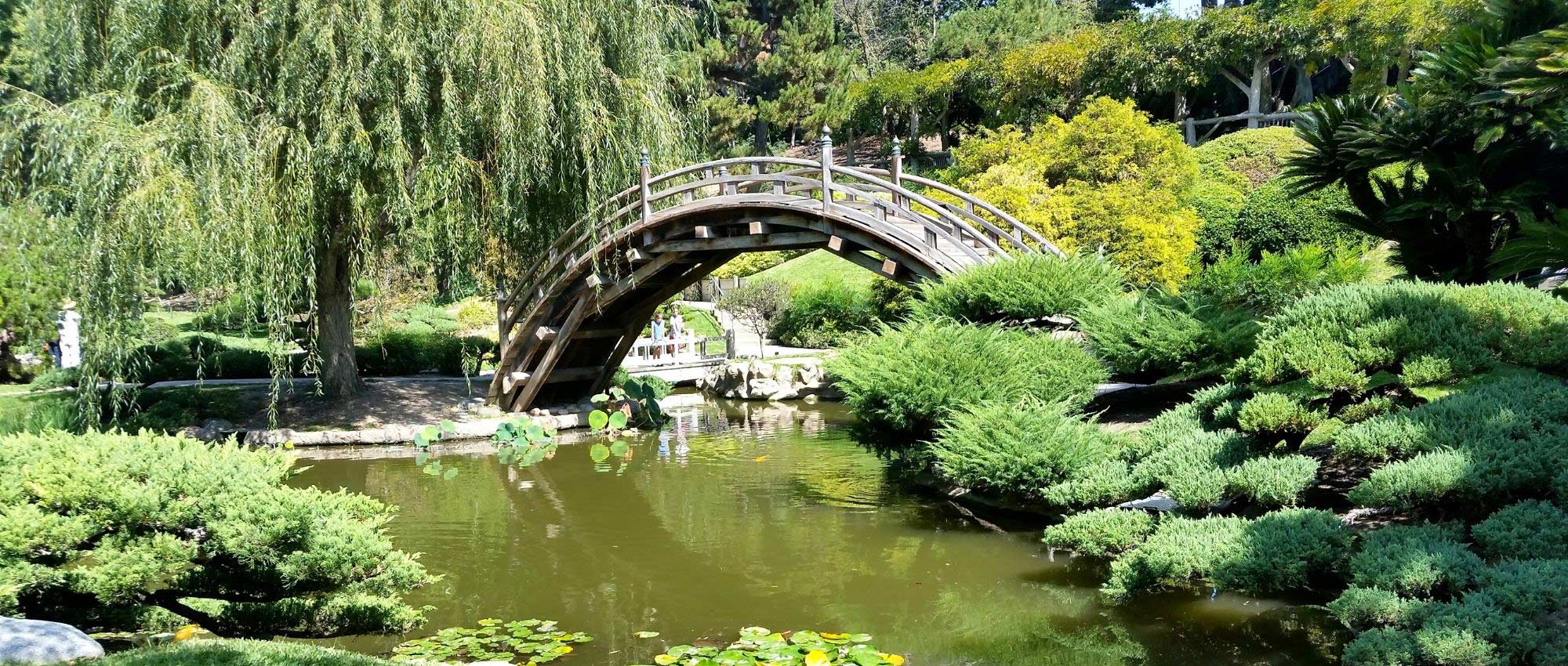
7 plant combinations for Japanese gardens
Our ideas for a zen ambience!
Contents
Inviting calm and meditation, Japanese gardens charm with the harmony of their shapes and colours. Clean lines create a genuine sense of space and allow the eye to move very fluidly. Japanese gardens make plenty of room for natural elements (rocks, gravel, waterfall, pond…), while also incorporating objects and decorative features (bridge, gateway, lanterns…). For more advice on designing this type of garden, you can consult our dedicated advice sheet.
Japanese gardens are spaces for contemplation, offering harmonious perspectives that soothe the mind. Plant palette typically includes groundcover plants, trees and bushes with a structured habit, ericaceous plants, dwarf conifers, Japanese maples… Often these gardens also include an area of gravel raked into ripples to symbolise water. A garden can be screened from outside by a bamboo fence. Discover our ideas and inspiration for combining plants in a Japanese-style garden!
Play with shapes using groundcover perennials and pruned bushes
Don’t hesitate to create contrasts of shape and play with textures. Install groundcover plants, such as the Helxine or Sagina subulata. They will form a uniform tapetum that embraces contours of the soil, and they will set off trees and bushes with a very structured silhouette. For example, include pines formed into cloud shapes (niwaki) and pruned box bushes. Also make use of trees and bushes that have a nival zone habit, with very horizontal branches. This is the case, for example, of Viburnum plicatum or Cornus controversa. You can also include bamboos, whose very vertical silhouette is ideal for structuring garden. In this type of bed, green predominates and highlights forms of plants. You can play with shades, with foliage in dark green, green-grey, bluish, light green-yellow…
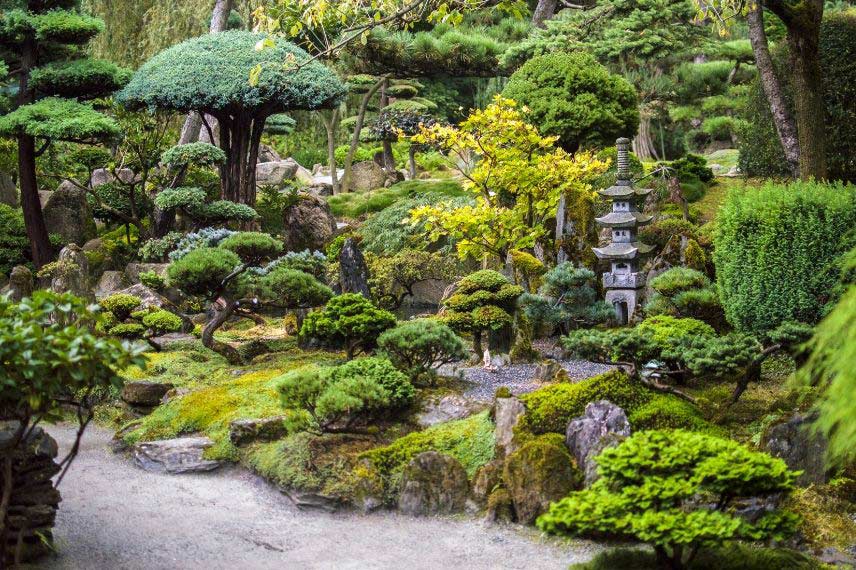
Combine small perennial plants forming a tapetum with conifers and bushes pruned into cloud shapes
Read also
Create a Japanese or Zen gardenCreate a rockery
Japanese gardens give plenty of room to mineral elements, which can be used to symbolise nature, a mountain or an island… so a rockery will blend in very easily! We recommend siting it in partial shade. Make a raised mound, place rocks or large stones on it to help hold the soil, and fill spaces between them with a relatively free-draining substrate. Incorporate grasses such as Hakonechloa macra, Carex oshimensis or Carex morrowii ‘Variegata’. Plant small groundcover perennials, saxifrages, a few dwarf conifers, hostas… Also consider ferns, such as the Coniogramme emeiensis, which offers truly distinctive foliage, or the Cyrtomium falcatum.
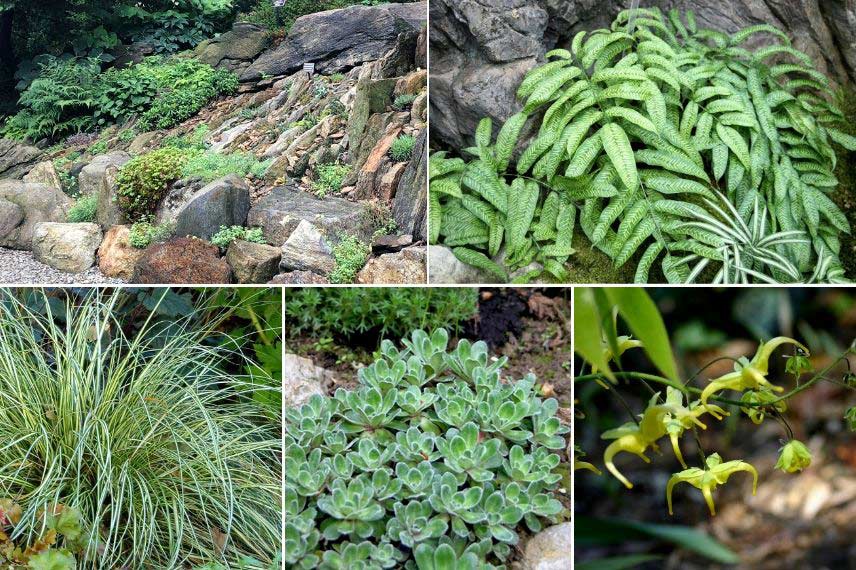
Coniogramme emeiensis (photo Cephas), Carex oshimensis ‘Evergold’, Saxifraga arendsii ‘Adebar’ (photo Natali Krmpotic Kolic), Epimedium franchetii (photo SB Johnny)
Discover other Japanese gardens
View all →Available in 1 sizes
Available in 0 sizes
Available in 0 sizes
Available in 0 sizes
Available in 2 sizes
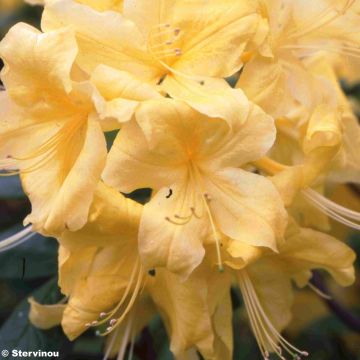
Available in 1 sizes
Available in 1 sizes
Available in 1 sizes
Available in 1 sizes
Available in 1 sizes
Pair flowering with soft hues
If you want a slightly more colourful garden, you can compose a beautiful spring scene by taking advantage of the superb flowering of the flowering cherry trees. Pair them with Phlox subulata, wisteria, magnolia, peonies… Also consider Japanese azaleas. You can also enjoy the striking foliage of the flamingo willow, Salix integra ‘Hakuro Nishiki’. In spring, its young leaves take on a lovely pink hue! In a Japanese garden, however, use colourful flowering sparingly, integrating it into a very green setting with plants that have decorative foliage. This will preserve a calming, very zen, natural effect. In summer, allow successive flowering, with the elegant white flowers of Cornus kousa, the flowering of the orchid Bletilla striata, Japanese primroses, Iris ensata, Tricyrtis…
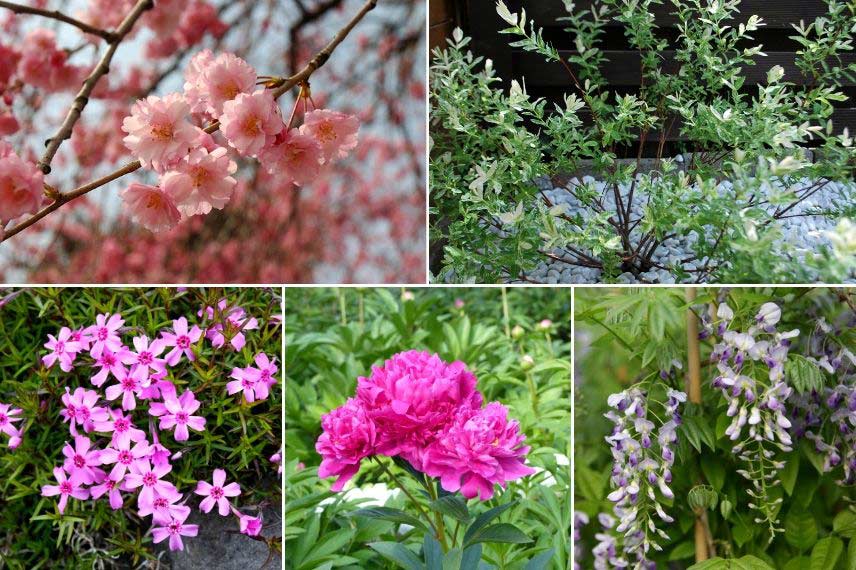
Prunus serrulata (photo Kropsoq), Salix integra ‘Hakuro Nishiki’ (photo Rašo), Phlox subulata (photo Anneli Salo), Paeonia lactiflora ‘Kansas’ and Wisteria sinensis
Read also
Bamboos: plant, pruning, maintainCreate a pared-back, graphic garden...
Japanese gardens often have clean, minimalist shapes, with bushes pruned to perfection, a pathway defined by Japanese stepping stones, plants creating a very homogeneous tapetum, undulations raked into a scree garden, etc. All these elements convey a sense of perfection and create a calming atmosphere. You can draw inspiration from them to design a contemporary, graphic garden in a Japanese style. This type of garden is ideal for arranging a patio or an urban garden.
Structure garden with very crisp straight lines or curves. Provide a central area where you will install a gravel zone on which you can rake undulations. Introduce bamboos to add verticality and structure. Discover, for example, the superb Phyllostachys nigra, notable for its black canes. Consider ferns such as Athyrium niponicum, which occurs in various shades, often silvery. For edging, plant Ophiopogon planiscapus ‘Nigrescens’. Also use groundcover plants such as Helxine or Sagina subulata. They follow contours of soil and create a very homogeneous green surface. You can materialise a pathway with Japanese stepping stones and plant these groundcovers between slabs. To add some height, incorporate cloud-pruned pines (niwaki).
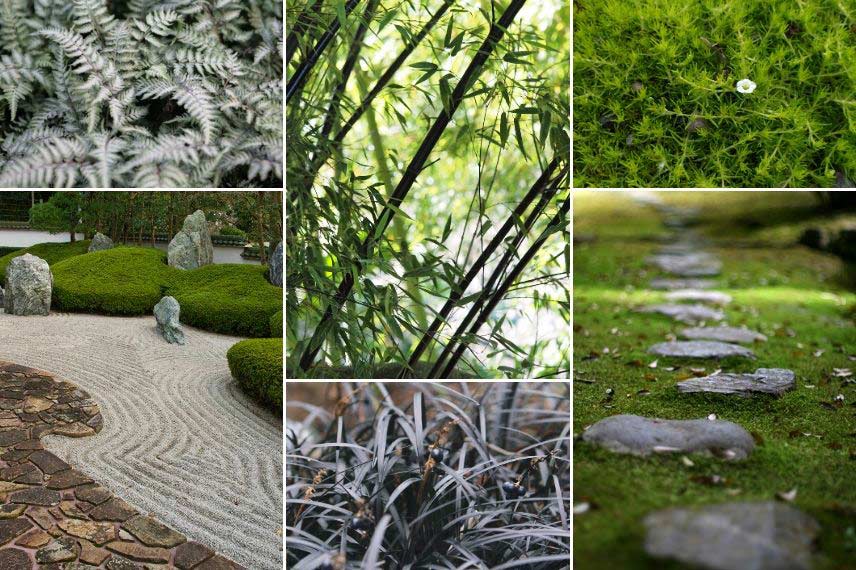
Athyrium niponicum ‘Pewter Lace’, Phyllostachys nigra, Sagina subulata ‘Aurea’ (photo Krzysztof Ziarnek), Ophiopogon planiscapus ‘Nigrescens’ (photo brewbooks)
... Or be inspired by nature to create a lush flowerbed!
In contrast to the previous example with very controlled shapes, you can create a lush Asian-style garden! Here, the look is more natural, yet the garden remains structured, with, for example, Japanese stepping stones marking a path, or a well-cleared central area covered with groundcover or a gravel area. Lush planting is placed mainly at the edges, forming a frame around this central area. Use ferns such as Dryopteris sieboldii, Cyrtomium falcatum, Polystichum polyblepharum… Their generous, delicate, airy foliage is much appreciated! Include Asian primroses, which offer a superb tiered flowering. Discover the Kirengeshoma palmata, a woodland perennial with beautiful palmate leaves and yellow, bell-shaped flowers. Also use bamboos to add an exotic touch. Consider the superb black bamboo, Phyllostachys nigra!
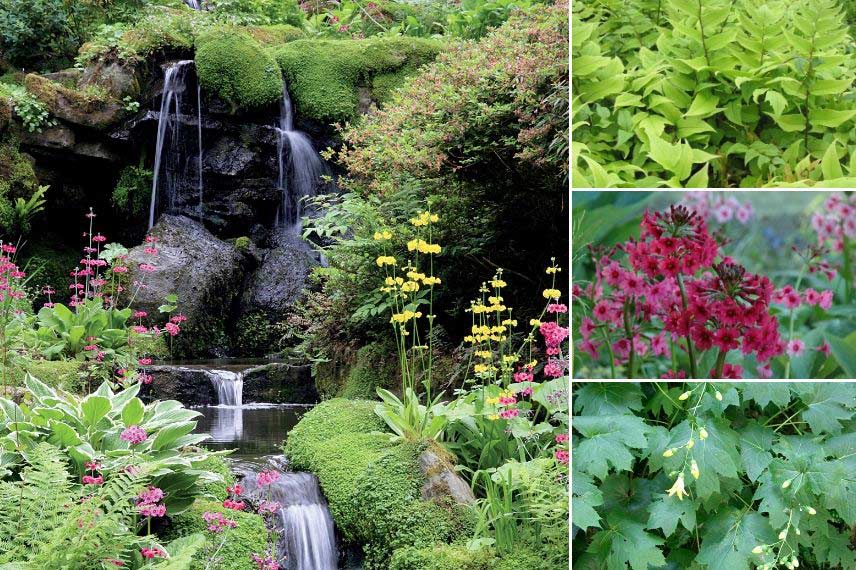
You can compose a beautiful naturalistic scene with Asian primroses, hostas, ferns… Cyrtomium fortunei var. Clivicola, Primula japonica (photo A.Breuvart), Kirengeshoma palmata (photo KENPEI)
Match heather soil bushes
Ericaceous plants have their place in Japanese gardens! If you have acidic soil, don’t hesitate to create a part-shade bed where you can include rhododendrons and azaleas. There are many varieties! Enjoy colourful foliage of Nandina domestica and Pieris japonica. Japanese maples will also sit well alongside them. They offer superb palmate foliage, finely cut, that declinates into different shades depending on variety and season! Also consider adding Skimmia, Daphne, Sarcoccoca… Place pine-bark mulch at base of these bushes.
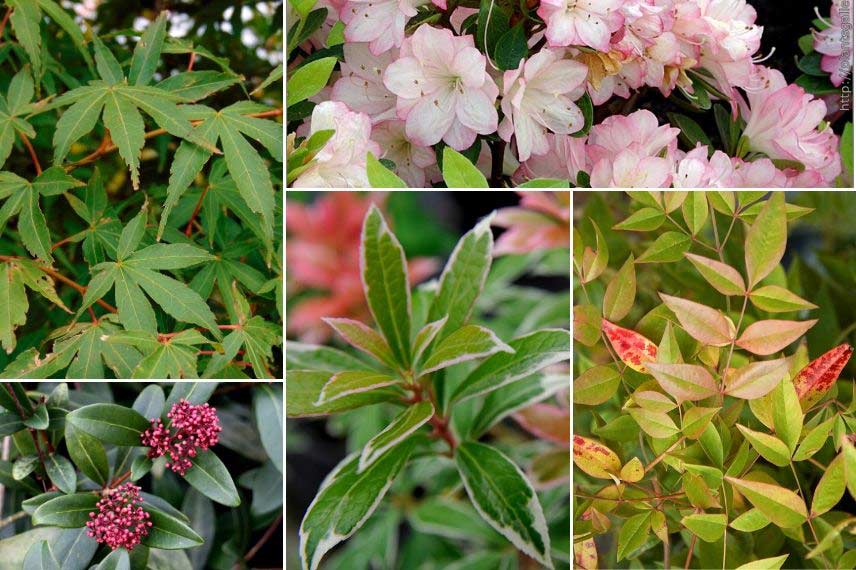
Acer palmatum ‘Orange Dream’, Skimmia reevesiana ‘Rubella’ (photo Dominicus Johannes Bergsma), Rhododendron kaempferi ‘Peggy Ann’ (photo Babij), Pieris japonica ‘Little Heath’ (photo Megan Hansen), Nandina domestica
Create colour contrasts with red or dark foliage
Generally, Japanese gardens play on textures and shades of green. It is interesting to add here and there touches of red to enliven a planting and create a striking contrast. Moreover, this will echo the red hue of bridges or torii gates traditionally installed in Japanese gardens. For example, use foliage of Japanese maples. You can choose a variety such as Acer ‘BloodGood’ or ‘Red Pygmy’. Japanese maple ‘Sangokaku’ is also interesting for its red branches! You can also provide contrast with the dark foliage of Ophiopogon planiscapus ‘Nigrescens’. Also discover fern Woodwardia unigemmata, whose young fronds take on a beautiful red colour.
Japanese gardens emphasise seasonal change: in spring admire cherry blossom, and in autumn red foliage of Japanese maples. Thus, don’t hesitate to include plants notable for their autumn foliage: Japanese maples, Prunus, Cercidiphyllum, Hakonechloa macra ‘Nicolas’, Nandina domestica…
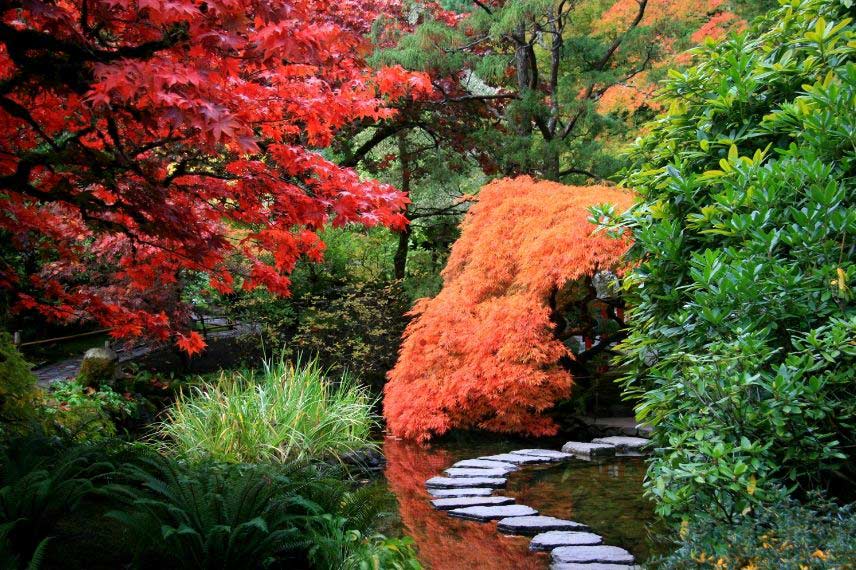
Use red foliage of Japanese maples to create stunning contrasts
- Subscribe!
- Contents































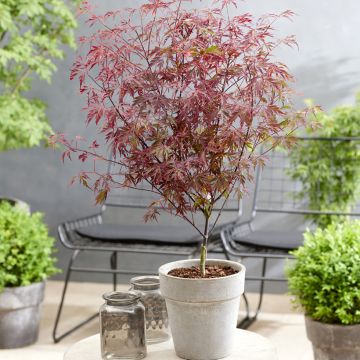
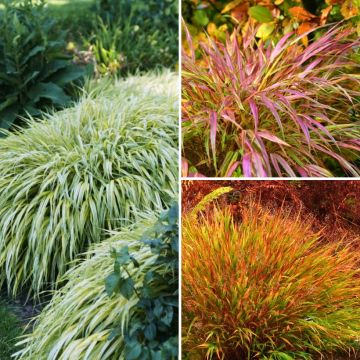

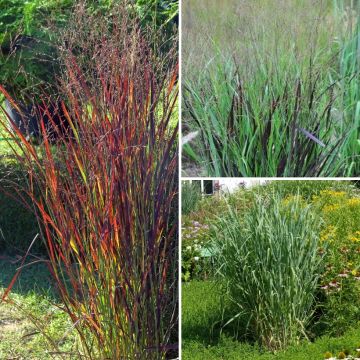
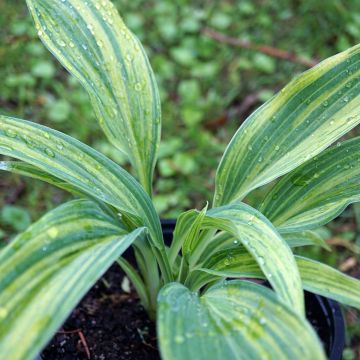
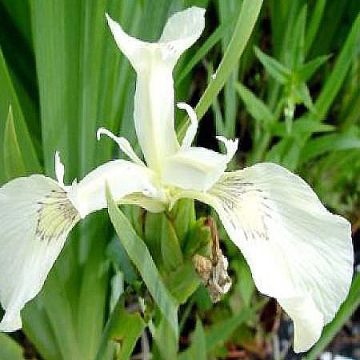
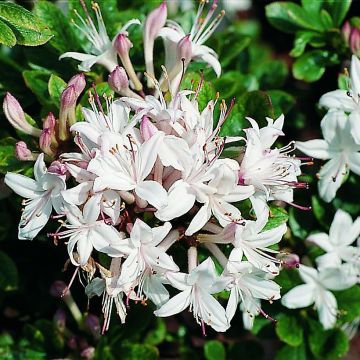
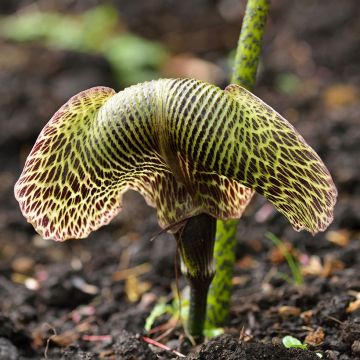
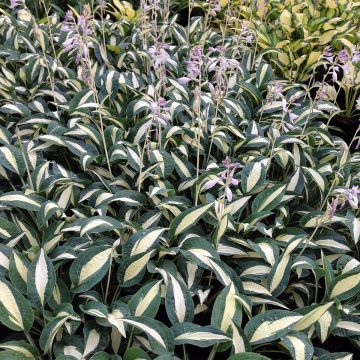
Comments